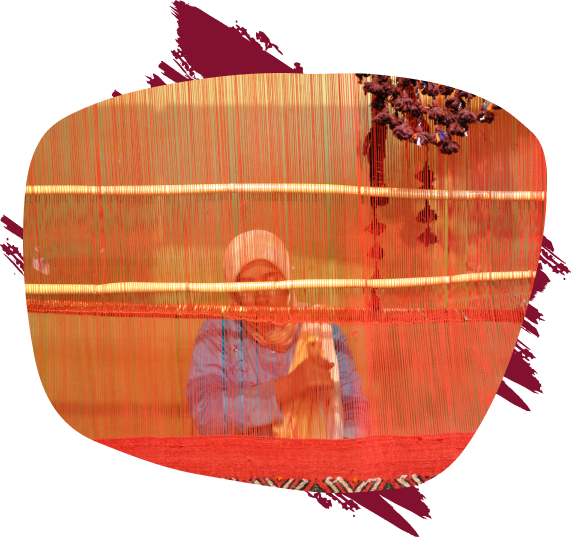Preserving Tradition The Legacy of Songket Weaving
In the heart of Malaysia, where tradition intertwines with artisanal heritage, a cultural treasure thrives, defying the challenges of time–Songket Weaving. Songket, a traditional Malaysian handwoven fabric, stands as an example of the meticulous artistry embedded in the cultural roots of the Malay Peninsula and Sarawak. What sets this textile apart is the distinctive decorative technique, where gold or silver threads entwine gracefully between the base threads. The result? A mesmerizing interplay of metallic threads floating over a vibrant woven canvas that creates an exquisite ornamental effect.
The Loom of Legacy
Behind every Songket masterpiece lies the heartbeat of a traditional kek, a two-pedal floor loom that has been the faithful companion of artisans for centuries. This traditional tool, coupled with the intricate weaving technique dating back to the sixteenth century, transforms raw threads into delicate fabrics. It's a labor-intensive process that unfolds over months, a testament to the patience and dedication of the skilled hands that bring Songket to life.
Inheritance of Expertise
The art of Songket is a legacy passed down from mother to daughter, a heritage entrusted to the women who preserve not just threads but a cultural narrative. Geometric shapes and organic elements like flowers, birds, and insects intertwine in intricate patterns, each telling a story of its own. This weaving technique, etched in the memories of artisans, carries the soul of generations past into the fabric of the present.
Traditionally reserved for royalty and their families, Songket has transcended its regal origins to become a symbol of Malay identity embraced by communities across the nation. From ceremonial clothing to royal installations, weddings, births, festive occasions, and formal state functions, the threads of Songket now weave a shared cultural identity, stitching the diverse tapestry of Malaysian life.
While the delicate art of weaving Songket has long been a domain of women, men play an integral role, contributing to the craft by crafting the essential weaving equipment. It's a collaborative effort where gender roles blur, and the spirit of community prevails, highlighting the inclusive nature of preserving this rich cultural heritage.


Preserving the Songket Legacy
In the face of modernity, the tradition of Songket weaving faces challenges. Rapid urbanization and changing societal norms cast a shadow on this ancient craft. Younger artisans show declining interest in this traditional craft. Women artisans (whose ancestors practiced the art) abandon the practice after marriage or relocate to urban areas for better job opportunities.
The escalating production costs of Songket, attributed to the increased prices of silk and cotton yarns, dyes, and metallic threads, further increase the challenges, impacting the demand for this exquisite fabric.
The need to preserve Songket goes beyond mere aesthetics; it is about safeguarding a living heritage that connects Malaysians to their roots. In the delicate hands of artisans, Songket stands as a bridge between the past and the future—a reminder that some treasures are worth preserving, one intricately woven thread at a time.
Addressing this issue is paramount, and an essential step forward involves innovating the Songket weaving process and nurturing a new generation of passionate Songket weavers who can infuse the craft with vitality. By nurturing a fresh wave of artisans and fostering innovation, we can preserve the art of Songket weaving and also propel it into a vibrant and sustainable future.
Are you loving what we do?
To know more about our adventures, say hello to us at hello@savedyingarts.com
